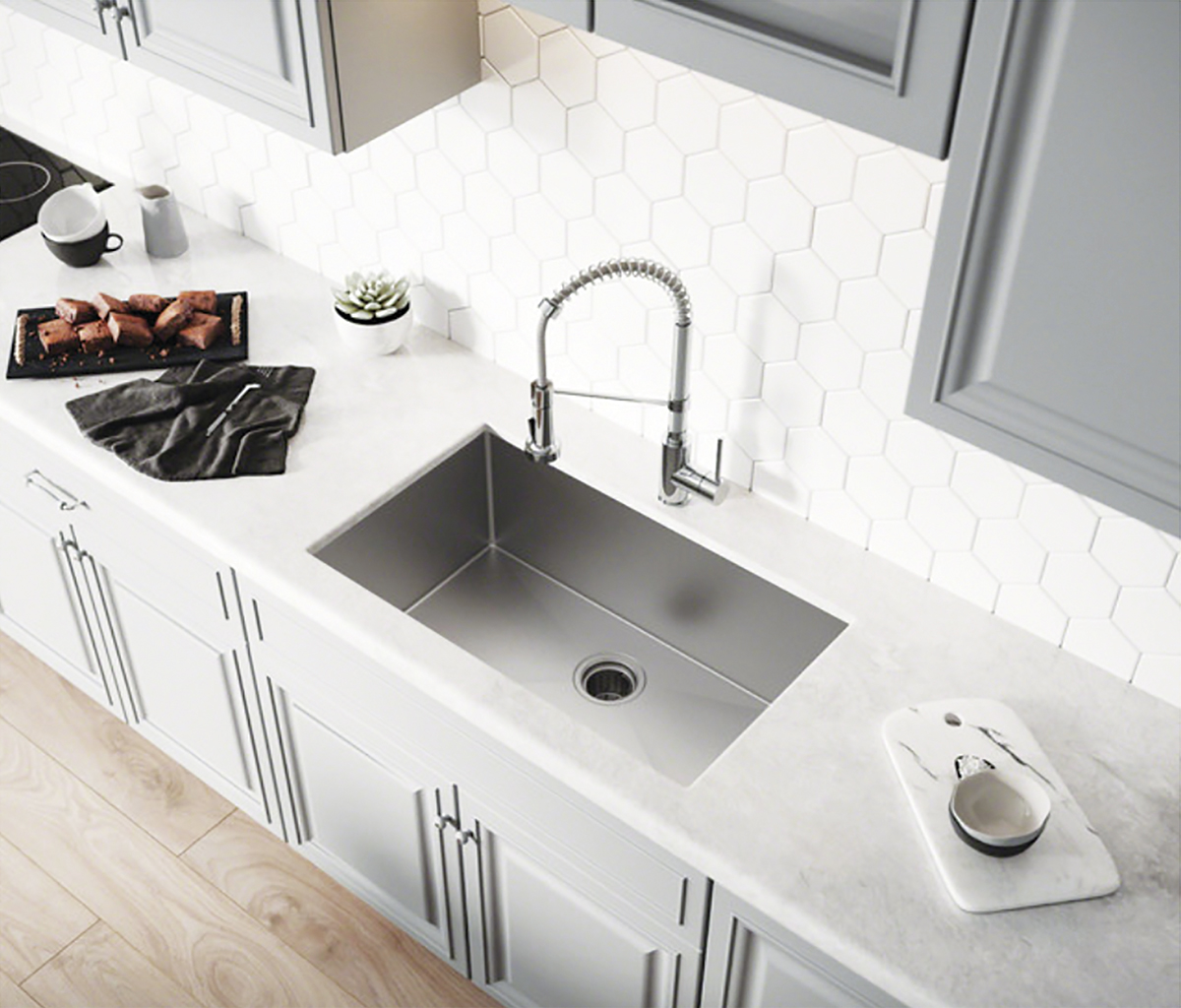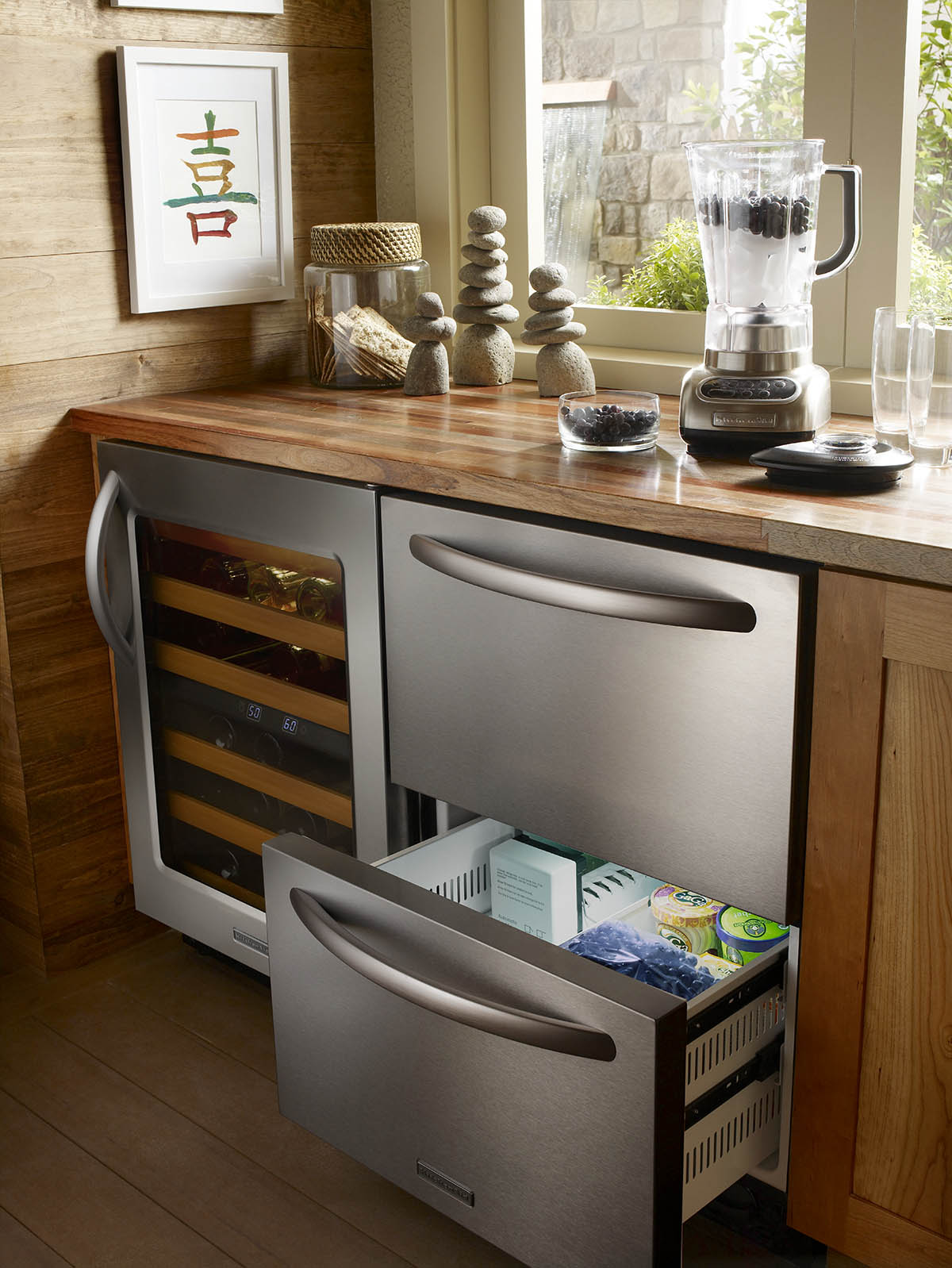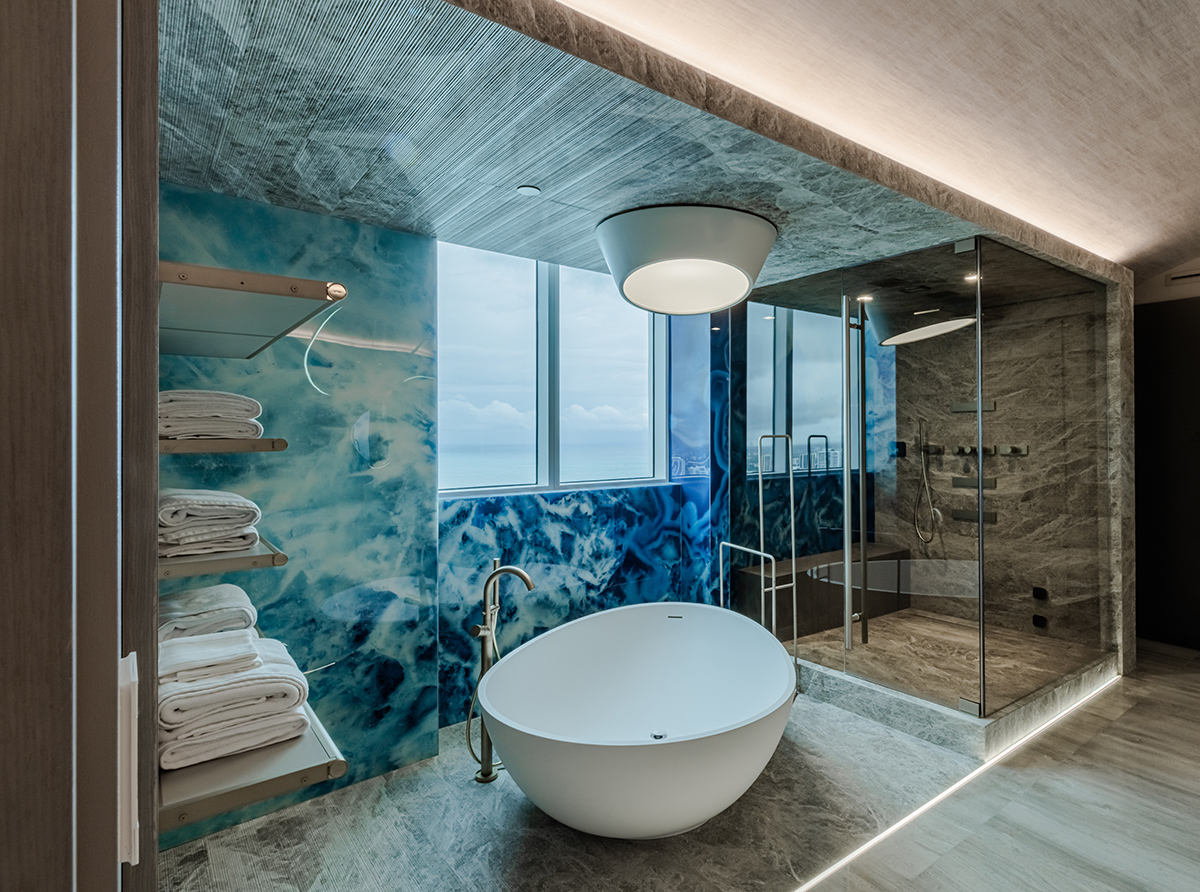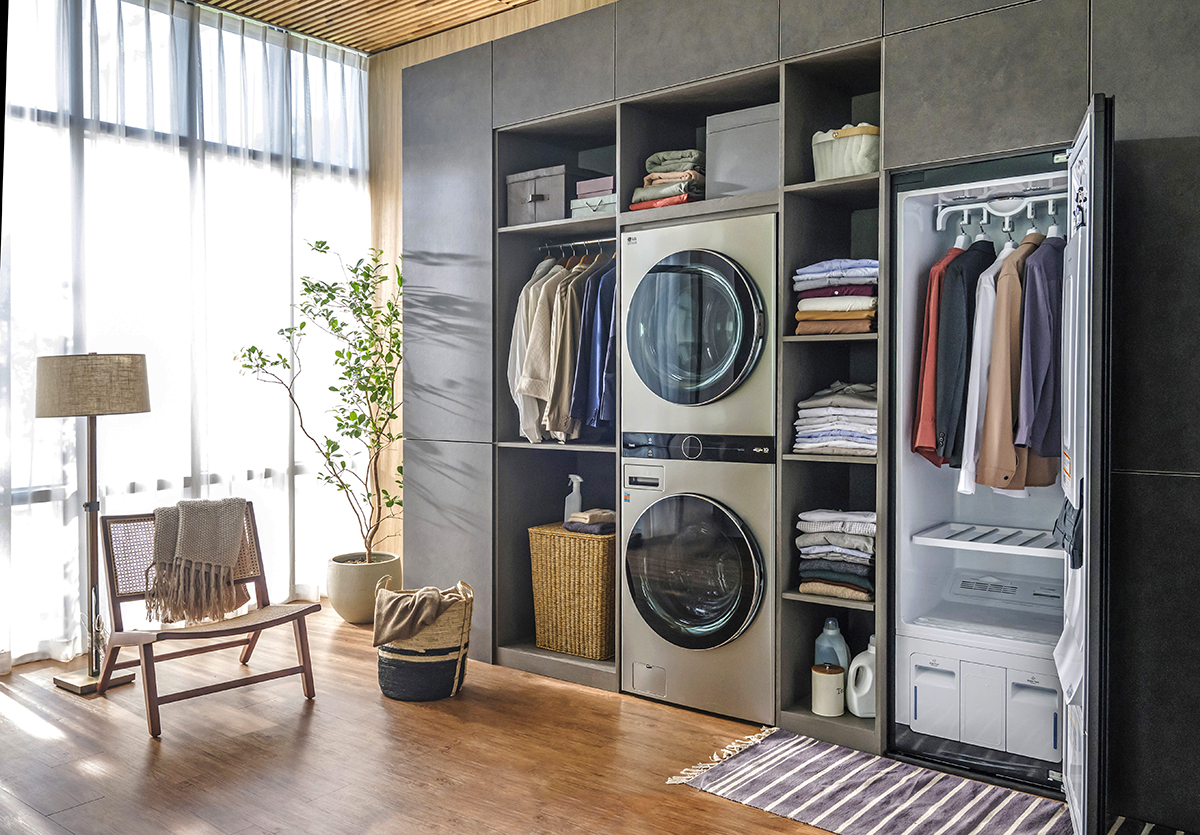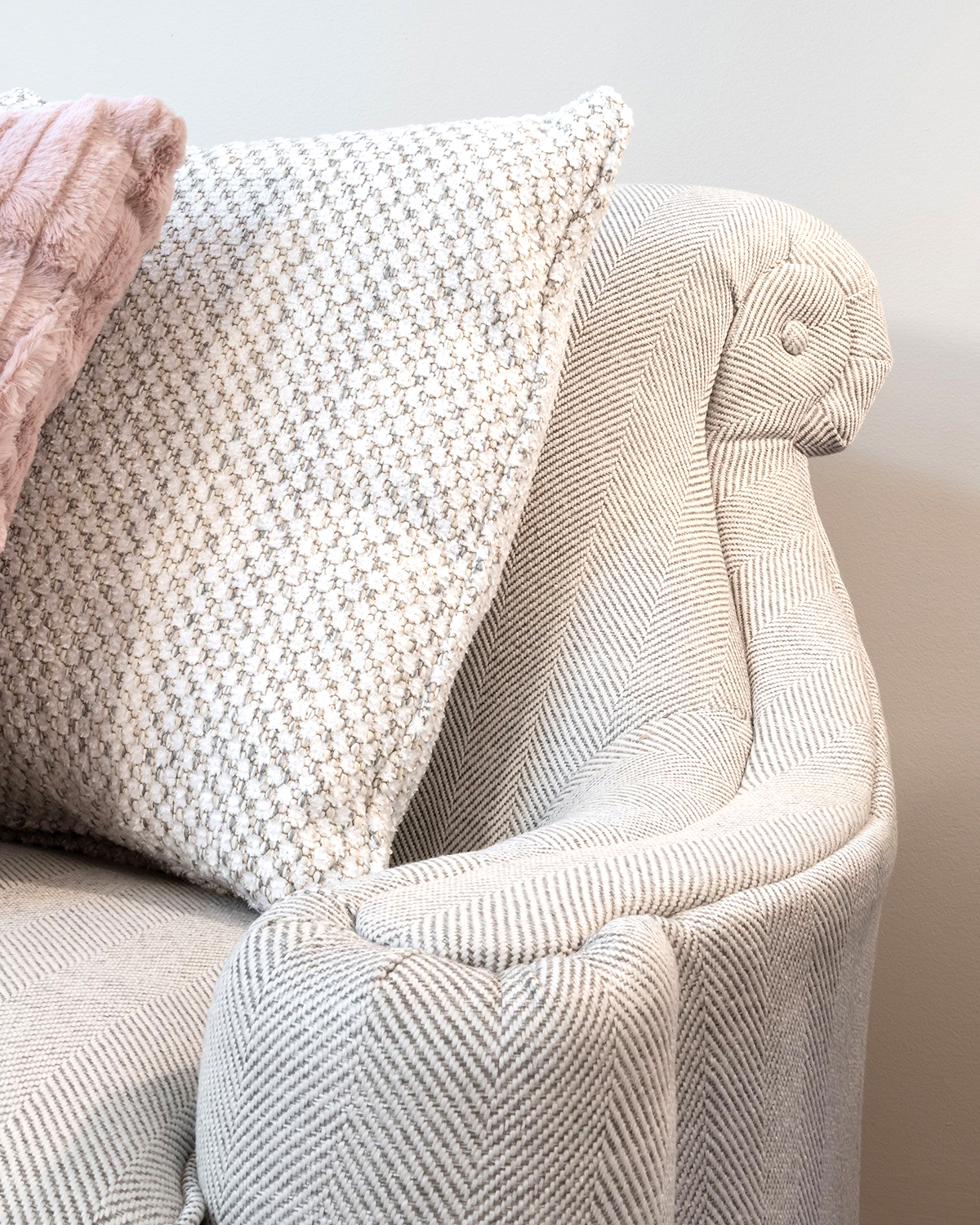WRITER | JULIE FORD
Sinks are the workhorses of kitchens, and while installing the latest trends may be tempting, there are many considerations for matching style to the functional needs of culinary experts in the home.
One of the first things to consider is how a sink will merge with the countertop. Integrated or one-piece countertops that include sinks are exceedingly sleek and available in a variety of materials such as Corian®, stainless steel, concrete, and copper. Marble, granite, soapstone, terrazzo, zinc, pewter, bronze, and glass are more distinctive options that can be unnoticeably seamed to create the lavish one-piece look.
Under-mount sinks are raised into place from underneath the cabinetry, matching edges with the countertop material. This is also a sleek design, but one drawback is the seam that can collect food particles over time and become grimy. As with integrated sinks, crumbs on the adjacent countertops can easily be wiped into the sink for speedy counter clean up.
Top-mount, drop-in, or self-rimming sinks are set into place from the top down, with a lip that either rests on the countertop or is held in place by a separate rim. For the budget-conscious, top-mount sinks are economical. Like under-mounts, they can coordinate with myriad countertop materials, but the lip prevents countertop food particles from being easily wiped into the sink, and the lip’s seam is a collection point for grime.
Apron-front or farmhouse sinks are available in under-mount, top-mount, and pulled-forward installations and typically require special cabinetry and supports due to their large size and weight. Styles and materials can fit a wide variety of kitchen designs. Accessories such as sliding cutting boards, colanders, and racks make food prep and clean up easier, and interchangeable aprons can transform the sink’s look in a snap.
Early-century highback wall-mount sinks and mid-century drainboard sinks are top-mount retro designs that can also be customized into standalone sinks. Prewar porcelain enamel over cast iron or steel sinks are still available in addition to specially treated fiberglass, stainless steel, and natural rock composites. Standalone sinks work well in period, farmhouse, utilitarian, and minimalist kitchens.
ReSearching kitchen sink materials is another consideration as durability and care can vary greatly. Stainless steel, for example, is more durable at a thicker, 14-gauge versus the typical 18-gauge sink. The lower the gauge, the higher the cost, and no matter what gauge is used, stainless steel scratches easily and shows water spots unless wiped clean after use. Every material from Corian® to copper has its pros and cons, so studying each to determine the best solution for your kitchen is well worth the time.
Other considerations are the number of sink bowls, whether they should be equally divided or not, and which available accessory inserts support your cooking style. Faucet styles may be limited in certain sink designs, but they can run the gamut if mounted into the countertop or wall.
Integral to kitchens and perhaps used more than any other appliance, sinks that balance function with style can make even the most mundane tasks enjoyable. From minimalist to extravagant, sensibly matching design and materials with personal preference ensures the sink will be a faithful partner in preparing years of memorable meals.


